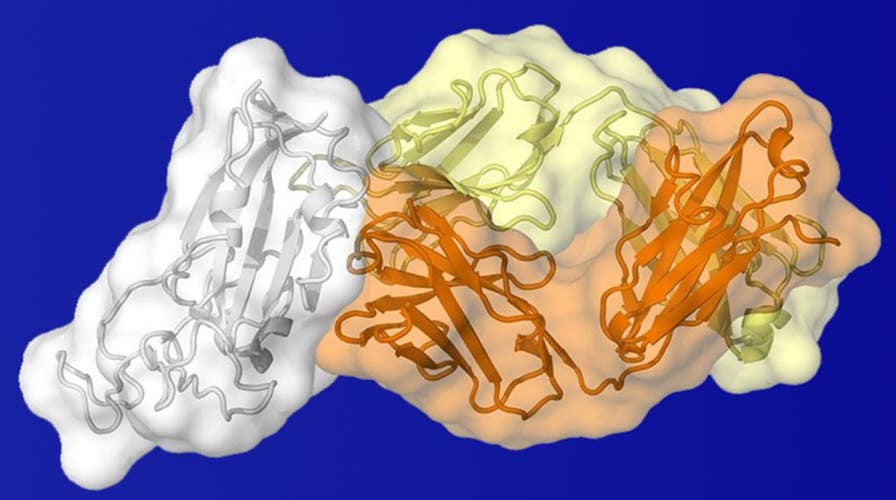How long is a recovered COVID-19 patient contagious after symptoms are gone?
Dr. Manny Alvarez explains how long a recovered coronavirus could be transmissible after symptoms are gone
Get all the latest news on coronavirus and more delivered daily to your inbox. Sign up here.
Scientists are working hard to understand how antibodies could be used to design an effective vaccine for the novel coronavirus that has killed more than 24,737 people in the U.S. and infected almost 2 million worldwide.
The image below shows a human antibody, which is a blood protein that our immune systems make to destroy viruses and other invaders in our bodies. This antibody is called CR3022, depicted in yellow, and is shown bound to the surface of the novel coronavirus (in white).
Researchers with the Scripps Institute in California utilized high-resolution X-ray crystallography tools in a paper recently published in the journal Science to capture the antibody's atomic structure. Each antibody is only about 10 nanometers, or one-billionth of a meter.
NATURAL LIGHT, FRESH AIR COULD KEEP CORONAVIRUS OUT OF WORKPLACES

Scientists are studying the novel coronavirus to find potential weak spots in its molecular structure. (Meng Yuan and Nicholas Wu, Wilson Lab, The Scripps Research Institute, La Jolla, CA)
The scientists were hoping to figure out exactly where the antibody attaches to the deadly virus. If those more vulnerable areas can be pinpointed, scientists will be able to use that information in designing a vaccine.
One of their findings is that the antibody binds on a similar site in both the SARS and novel coronaviruses.
"The human antibody shown in this image locks onto the virus’s spike protein at a different location than where the human ACE2 protein binds to the novel coronavirus. Intriguingly, the antibody binds to a spot on the novel coronavirus that is usually hidden, except for when [the] virus shapeshifts its structure in order to infect a cell," Dr. Francis Collins said on the National Institutes of Health (NIH) Director's Blog.
APPLE AND GOOGLE PARTNER ON CORONAVIRUS TRACING EFFORT
According to Collins, the findings suggest that a possible successful vaccine could elicit antibodies to "target this same spot, but binds more tightly than the one seen in the image above, thereby protecting human cells against the virus that causes COVID-19."
Ian Wilson and his colleagues at the Scripps Institute are in the process of gathering blood samples from those who have recovered from COVID-19 so that more research of this nature can be published soon.




















